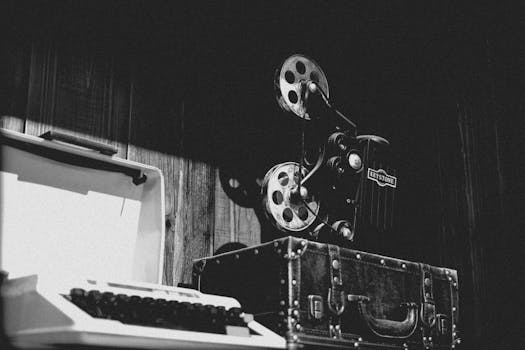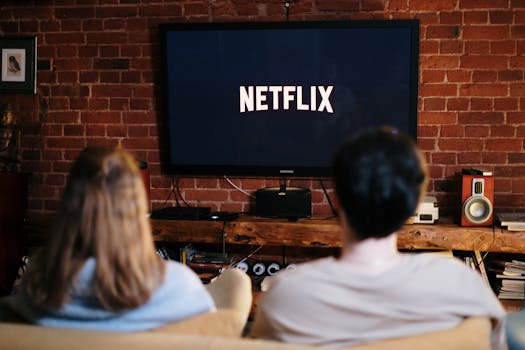TV Shows
The Psychology Behind Why We Binge-Watch TV Shows
Discover why binge watching TV shows is irresistible, what psychological drivers fuel our habits, and how to keep your streaming balanced and enjoyable.
Advertisement
Three episodes in, and your popcorn is cold, but you’re clicking “next episode” anyway. Binge watching TV shows draws people in effortlessly, blurring the line between one story and the next.
With nearly every genre streaming at your fingertips, understanding why TV binge watching continues to appeal can offer surprising insight into your own habits. The pull runs deeper than mere entertainment.
Explore the psychology behind why we binge watch, and discover practical tools to set your own viewing boundaries or find new meaning in your favorite series. Let’s dig in.
Reward Cycles That Hook Viewers Immediately
Identifying your reward triggers means you can spot what keeps you on the couch. Binge watching exploits built-in anticipation and satisfaction loops that TV writers design deliberately.
Writers carefully structure episodes to end just as a character faces a dilemma or secret. This moment creates an internal itch—the desire for quick resolution—turning one episode into three in a heartbeat.
Chemical Rewards: Your Brain Responds to Cliffhangers
When a cliffhanger scene arrives, your brain releases dopamine, driving the urge for quick payoff. The rush isn’t blind excitement; it’s a targeted reward for sticking around.
Think of finishing a season like solving a puzzle: your body feels satisfied when you close story loops. Retaining this cycle boosts binge watching frequency without extra effort from you.
Watching a hero barely escape danger? That physiological thrill builds anticipation. Try pausing and naming the emotion to disrupt the habit loop the next time this happens.
Story Structure: Rhythm Dictates Urgency
A show like “Stranger Things” layers mysteries so each answer spawns a new question. This rolling reveal sequence nudges you forward, phrase by phrase, scene by scene.
Mini-series employ the same technique, but compress it into even shorter segments. If you identify when you’re compelled by rhythms instead of interest, you can step away—just as a writer intends to reel you in.
Practicing this active awareness can reset your binge watching expectations, giving you more control while enjoying great storytelling.
| Technique | Viewer Effect | Example TV Show | Next-Step for Viewers |
|---|---|---|---|
| Cliffhanger Ending | Increases tension and anticipation | Lost | Pause and reflect before next episode |
| Multi-Arc Narrative | Draws in with overlapping threads | Game of Thrones | Track arcs separately for mindful viewing |
| Flashbacks | Teases context, keeps you guessing | This Is Us | Identify core storyline each time |
| Time Jumps | Forces quick adjustment to plot twists | Dark | Summarize previous scenes aloud |
| Character Focus Shifts | Builds empathy and tension simultaneously | The Wire | Predict outcomes before moving on |
Choice Overload Sets Binge Watching Patterns
By identifying specific signs of choice overload, you can structure your watchlist to prevent defaulting into endless viewing. Curating options matters, not just quantity or convenience.
Faced with massive libraries, a casual night’s viewing can spiral into hours. Organizing your queue with intent slows the autopilot effect inherent in binge watching cycles.
Intentional Curation Outperforms Random Picks
Instead of letting algorithms dictate, set a plan: choose three series for your month, naming one as a backup. This clarity shrinks stress and the urge for serial watching.
- Prioritize one genre for focus. You’ll feel less scattered—and a single mood can help build meaningful associations with shows.
- Designate “pause days” in your week. Take time to check in with yourself and adjust based on how each series makes you feel.
- Track which character types draw you in. Patterns may reveal why binge watching comes easier with certain cast dynamics.
- Set a maximum episode count per session. Document your experience, then review if you feel more relaxed or have greater recall.
- Write a show wishlist for weekends. Planning builds anticipation naturally without skidding into marathon territory every evening.
Strategizing your TV time clears a way forward when faced with new seasons launching all at once—reducing anxiety about missing out.
Account for Mood and Context in Your Choices
Viewers gravitate toward sitcoms after hard days and dramas during reflective weekends. Naming your “why” before each watching session cuts down on mindless scrolling.
- Ask yourself directly: “Would I rewatch this tomorrow?” If not, try swapping genres or rerunning a classic favorite instead of starting a fresh binge.
- Keep snacks and drinks in a different room. The physical separation reminds you to call a pause, helping snap out of compulsion loops.
- Create shared viewing with friends virtually. This introduces outside opinions—naturally slowing the binge watching rhythm as you wait to watch together.
- Jot down memorable scenes post-viewing. Summarizing favorite moments helps you savor rather than consume rapidly and forget.
- Use a timer to review your episode count after every two shows. If you overrun your mark, reinforce your plans with a soothing post-viewing routine.
Making these habits routine can reframe your relationship to TV, so binge watching feels purposeful and even restorative.
Emotional Investment Fuels Our Need for Resolution
Getting emotionally attached to TV characters sharpens the urge to binge watch because your brain starts treating their outcomes as personally significant.
That connection grows whether you’re watching heartfelt dramas or suspense-laden thrillers, reinforcing why certain series become instant marathon material.
Character Relatability Creates Habitual Views
The more a character reminds you of real friends or loved ones, the easier it is to stay with a series for hours. This effect isn’t random—humans mirror emotions naturally.
A viewer rooting for Walter White might recognize a familiar struggle, echoing their own dilemmas in micro-moments. Naming this dynamic lets you appreciate artistry without losing boundaries.
Next time you spot this connection, say out loud which trait you relate to most. This moment of pause introduces conscious appreciation into your binge watching flow.
Long Arcs Deepen Viewer Loyalty
Multi-season shows like “The Crown” let you see a cast navigate years, not weeks, of challenges. Each progressing season rewards committed viewers with sharper context.
As you invest more time, you’ll find yourself recalling background details from early episodes. Capture these insights in a show journal to make binge watching more intentional and insightful.
This tracking transforms a passive habit into active engagement and deeper enjoyment, because you’re now noticing details—and can share those with friends or online communities.
Distraction and Escapism: The Protective Side of Binge Watching
For some, binge watching serves as a buffer against daily stressors by offering a controlled, immersive escape. Recognizing this motivation can help you decide when to set limits or lean in deliberately.
Even intense marathons of serious dramas provide timeouts from work, relationship strain, or uncertainty—much like choosing a comforting playlist for a tough commute.
Strategic Distraction: Protective, Not Avoidant
A viewer might say, “I just need to turn my brain off tonight—let’s binge ‘Brooklyn Nine-Nine.’” The script reframes the behavior as brief self-care, not escape from life entirely.
Setting a post-binge plan—like finishing the night with tea or conversation—can maintain balance between healthy distraction and pure avoidance. Write this step down after your viewing session for best results.
This intentional use gives binge watching a proactive purpose, helping you recharge without guilt.
Escapism with Awareness: Building Limits
When you notice shows filling emotional gaps, create specific viewing slots—“One episode after dinner only.” Share your plan with a friend who can help keep you honest.
Treat these boundaries as a skill to refine each week. Celebrate small wins, like sticking to your limit, and jot down what improved in your day as a result.
The analogy of binge watching as a digital comfort blanket works best when you periodically shake out the metaphorical dust—refreshing your habits for productivity and positive emotions.
Social Connection and Shared Experience Drive Extended Viewing
Watching TV shows becomes a social event, even if you’re not physically together. Binge watching bridges distance through live chats, group texts, and virtual watch parties.
Synchronizing your schedule with others means entire friend groups commit to entire seasons—adding a new layer of motivation beyond personal interest alone.
Community Builds Lasting Engagement
When a new season of “Stranger Things” drops, real-world conversations surge. Group chats fill with episode recaps, predictions, and memes—slowly blending solo binge watching into collective excitement.
Inviting friends to join for season debuts can turn an isolated evening into a weekly ritual. Each new episode becomes a mini event, something you look forward to together.
Propose a shared rule: “No peeking ahead!” Building these guidelines ensures everyone enjoys the surprise and feels invested equally.
Online Platforms Extend Viewing Beyond the Living Room
Engaging online—posting reviews or jumping into Reddit threads—creates another dimension to binge watching. The feedback from fellow fans validates your emotional investment and offers new perspectives.
Many viewers go so far as to schedule live tweet sessions or video calls during premieres—blending virtual and social binge watching seamlessly. This real-time connection can help slow consumption, adding more depth to the experience.
Try responding to one new online friend after each episode you finish, broadening your network and deepening your appreciation for diverse perspectives.
Balancing Enjoyment Without Losing Control Over Binge Watching
Use specific self-checks to keep binge watching enriching and fun. The following routines can add satisfying structure while leaving you in control—so each marathon session feels intentional, not compulsive.
- Build a viewing calendar choosing specific nights for series and for one-off movies, keeping anticipation high but pacing yourself against burnout.
- Set visual reminders—like a sticky note on your laptop with a gentle “Did I plan this binge?” prompt—encouraging mindful starts rather than default behavior.
- Celebrate when you finish a show with friends or family, discussing character arcs and plot twists—making the post-binge phase a social ritual instead of emptiness.
- Create “media fast” days. Announce these pauses in your home or group chat to hold yourself accountable and reclaim extra time for other activities.
- Reflect weekly by jotting what you gained from a series or marathon session. This step helps you gauge emotional benefits and inform your next binge watching plans deliberately.
Treating these tools as skills gives you agency while exploring the rewards and stories that make binge watching so enduringly popular.
Final Thoughts: The Enduring Appeal and Smarter Habits of Binge Watching
Binge watching TV shows draws on natural curiosity, emotional bonds, and social ties, paving a path toward immersive entertainment. Recognizing the driving forces helps you steer your own habits and appreciate why TV storytelling keeps evolving.
By setting boundaries, choosing content intentionally, and inviting friends into the experience, you can enjoy rewarding binge sessions while avoiding exhaustion. Understanding your personal triggers makes every hour more meaningful.
Next time you start a binge watching session, try one concrete tip from this guide. Bring purpose to your viewing and discover new ways to enjoy the best TV has to offer.
You may also like

Movies That Defined Each Decade in Film History: An Essential Guide
Trace film history through defining movies that captured each decade’s spirit and cultural transformation.
Keep Reading
How Real Locations Transform Movie Storytelling
Explore movie locations that bring stories alive, enhancing realism, emotion, and atmosphere through genuine visual storytelling.
Keep Reading
How Editing Turns Raw Footage Into Movie Magic: The Power of Film Editing
Learn how film editing transforms raw footage into seamless visual storytelling that drives rhythm, tone, and emotion.
Keep Reading

